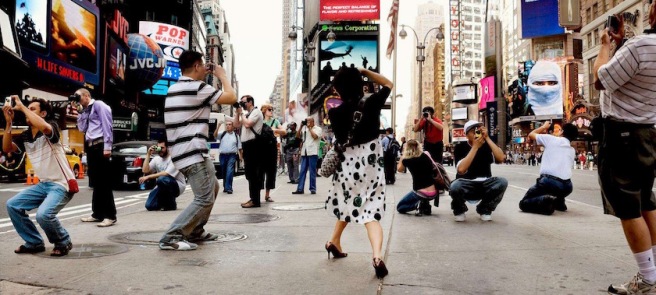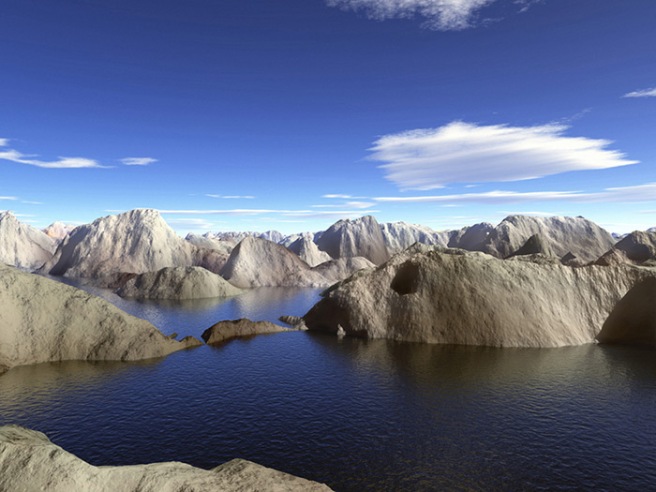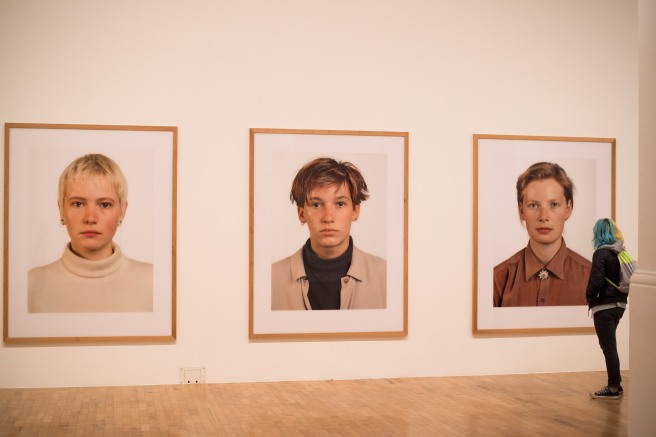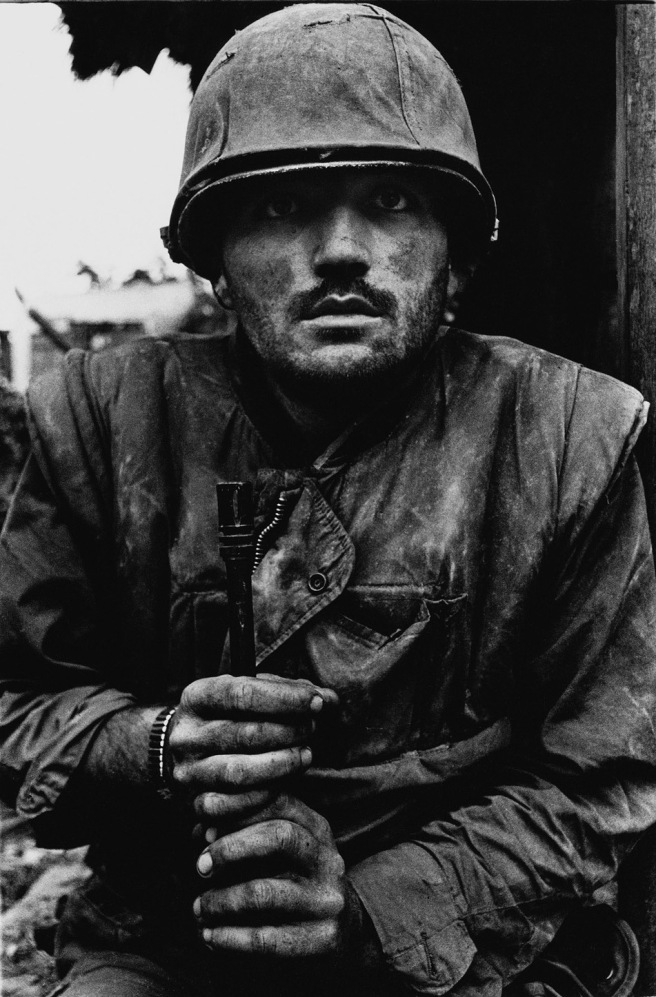Does the type of aesthetic approach employed by the photographer affect the accessibility of the work to an audience?
Aesthetics are a key attribute of a photograph. They affect the reader’s gaze and so photographers are faced with the question of whether to make their photographs aesthetically-pleasing or gritty and true-to-life. What constitutes ‘aesthetically-pleasing’ or ‘gritty and true-to-life’ is a very subjective topic though, due to the fact that each viewer’s taste for pleasing aesthetics varies. ‘Judging beauty and other aesthetic qualities of photographs is a highly subjective task.’ – (Datta, Joshi, Li, Wang, 2006). Although this is a subjective task, by using a computational approach it has been possible to see ‘there exist certain visual properties which make photographs, in general, more aesthetically beautiful.’ – (Datta, Joshi, Li, Wang, 2006). Therefore although aesthetics are subjective, they do conform somewhat to a standard. It is our natural inclination to make aesthetically-pleasing photographs too: ‘Except for those situations in which the camera is used to document, or to mark social rites, what moves people to take photographs is finding something beautiful.’ – (Sontag, 1977). The intended usage of the photograph is one factor to take into account because it can dictate whether a photograph is used to document or to find something beautiful.
Certain photographers combine these two disciplines (documenting and finding something beautiful) to express powerfully their vision and one such photographer is Sebastião Salgado. ‘In their strong formal design, Salgado’s pictures revive photographic modernism with its emphasis on geometry and visual contrast. Beauty is pressed into the service of an old-fashioned humanism…’ – (Stallabrass, 1997). This description of his photographic approach shows Salgado’s strong aesthetics but also hints at his moral code when taking these photographs. Although he has been very successful in his projects, he has also been criticised by some for the beauty inherent in even his most haunting photojournalistic photographs. One prominent critic of Salgado’s ‘aestheticisation’ of suffering was Ingrid Sischy. She argued that ‘this beautification of tragedy results in pictures that ultimately reinforce our passivity toward the experience they reveal.’ – (Sischy, 1991). By combining documenting something factual with the aestheticising of these facts, Salgado is in fact detracting from the photographs’ message in terms of their power to portray the truth of what they depict.

- Fig. 1. © Sebastião Salgado (1983) Children playing with animals bones, Brazil
I would agree on a base level that the viewer of such photographs (Salgado’s beautiful documents) is more likely to be distracted from the message because of the aesthetics than had the photographs simply aimed to portray ‘the truth’. For example with Fig. 1, (Mraz, 2002) makes the point that: ‘The photo’s psychological tone is set by the solemn expressions on the children’s faces and their prostration on the floor’. In my eyes though the ethereal lighting from solely the open doorway with the strong tones of light and dark created from this (especially on the bones themselves) capture and divert my attention for far longer. However, I would also then suggest the critic of such an argument – that Salgado’s aesthetics distract from the message – is missing a vital point. Salgado’s projects clearly reach a great audience and in this regard at least he has been successful. If his works’ aesthetics were not so powerful and beautiful would his work have reached so massive an audience? Therefore perhaps Salgado is looking at the wider picture in so far as getting a message across, even if it means aestheticising the facts.
So far I have only been concerned with superficial aesthetics of photography as this is the foremost feature people get to when looking at photographs. Photographs can also be regarded as beautiful beneath their outward appearance and I would assert that this gives such photographs more liability to possess deeper meaning once the message has been uncovered. A photographer I have recently been to an exhibition of: Thomas Ruff springs to mind as an example where the work is not immediately beautiful (at least to my eye) but instead the viewer has to read into the work to find beautiful meanings within the work. One of his most famous projects: Portraits 1986-1991 (see Fig. 2) employs several strategies to enable the viewer to find meaning within the work which I myself found beautiful. Showing Fig. 2 in this size on my blog felt like I was doing a disservice to the impact the enormous print has on the viewer when looking at it in a gallery. On the other hand the superficial aesthetics were not particularly pleasing to the eye; the photographs depicting the blank expressions of people Ruff knew from those years. However, this is part of the ruse where Ruff produces these massive prints of vacant faces, enticing the viewer to wonder why they are printed so monumentally big when they are just like passport pictures. Unearthing the message beneath – for me it was that the passport style pictures allow the viewer their own interpretation of the sitter which is ultimately a contrived one – was a rewarding experience.

- Fig. 2. © Thomas Ruff (1988) Porträt (P. Stadtbäumer)
Although I picked up on this meaning somewhat by myself I still had to back up my assertions from another source – ‘a portrait by Ruff looks like a very large passport photograph. … Any personality a sitter may have is there because you, the viewer, have projected your own feelings and prejudices on to the image.’ – (Dorment, 2003). In my opinion this gaining of understanding, while rewarding, is also less immediate and has less widespread ‘appeal’ than the superficially beautiful work of, for example Salgado. Because the reader has to search for the beauty embedded inside rather than on the surface, more casual readers may not bother gaining understanding from work like Ruff’s, where the aesthetics are imbued within. Looking at this from an aesthetic point of view it would be possible to argue that both draw from the vernacular: Ruff playing upon it intentionally by taking all the ‘accidental’ elements out of the traditional vernacular and using them to his advantage like with his Portraits 1986-1991 project (see Fig. 2). On the other hand, Salgado employs telling juxtapositions (like the children juxtaposed with the bones in Fig. 1) and combines this with selective framing and often dramatic, otherworldly lighting. All of this becomes unified because Salgado continues to utilise the black and white medium. Although this might seem like the opposite of traditional vernacular imagery – where colourful, seemingly accidental snapshots are prevalent, looking closer it seems Salgado has culminated the ingredients of the vernacular into a more sophisticated version.

- Fig. 3. Photograph 4 – Assignment 3 – Documentary
I have until recently always given slight precedence to the superficial aesthetics attribute of my photography and in part it has defined the images I’ve produced for my projects. In hindsight this was perhaps an attempt to move it away from the vernacular type imagery pervading social media. With Assignment 3 – Documentary (see Fig. 3) I turned my attention away from my inward battle between superficial aesthetics and meaning. Instead I put my efforts into telling a convincing story; letting meaning come first and putting aesthetics to the side. Interestingly I found they were still linked as the aesthetics when consistent, combined to tell a more immersive story. However, I noticed certain photographers disregarded superficial aesthetics altogether or even deliberately to make them gritty such as Daido Moriyama.

- Fig. 4. © Daido Moriyama (1969) Eros
Moriyama at the time he was taking photos on the streets of Tokyo (in the 1960s) prescribed like the group of left-wing photographers he joined to a style developed to break away from aesthetic conventions of a ‘good’ photograph found in European and American photography. They instead employed an aesthetic that ‘was identified with the expression ‘are, bure, boke’ – grainy, blurry and out of focus, in reference to the three main characteristics that distinguished the group’s images’ – (Scaldaferri , 2017). Moriyama’s reasoning for using such gritty aesthetics (see Fig. 4) was that he was ‘Refusing the idea that the photographic medium could only be used to produce archival documents,’ instead ‘putting an accent on its image-making capability’ – (Scaldaferri , 2017). He thereby used the aesthetics of as a conduit to express his emotions about the state of Tokyo’s dark streets at that time. Moriyama was and remains very popular, influencing other photographers and young people especially in Japan: ‘The older generation appreciates a lot of Daido’s work, but right now he is very, very popular among young people’ – (Uematsu, 2012). However, the appeal of his work is not as widespread (outside of Japan) as say Salgado and I would argue this is because it does not conform to (a Western at least) standard taste for the beautiful which has been more popular. An important note this brings up is the subjectivity of aesthetics because the emotion Moriyama’s work evokes clearly affects certain viewers more than others. What I could see influencing me from Moriyama’s work would be the understanding that the process of making an image can be far more important in terms of emotion conveyed in this process than the aesthetic. Having said this, Moriyama clearly intends to go consistently for the ‘are, bure, boke’ look. For me this deliberation could be because his work transcends the traditional vernacular with the choice of black and white medium and emotion caught in the frames.
Conclusion:
While it may be true that photographs with gritty superficial aesthetics are not as accessible as work which conforms to our standard taste for the beautiful, often there is a space for deeper meaning to be accessed by the viewer in the work. This could be whether it is intended by the photographer – by playing upon the vernacular – or not. As long as the work is consistent too the viewer may gain more from a set of photographs than a singular, glorified image. Also it may well be important to the photographer to display emotion in their photographs which in itself could be considered beautiful. In a funny kind of way photographic projects with aesthetics that don’t conform to a standard taste for the beautiful have more art value than work which doesn’t play on the vernacular or is less emotional. All of this depends on what kind of impact the photographer wishes to make and to what type of audience.
‘something considered beautiful conforms to a standard taste, whereas something considered as ugly may confront our present sensibility and bring out a new one.’ – (Fontcuberta and Feustel, 2010). While this quote by Joan Fontcuberta when talking about beauty shows that a deeper meaning or even new sensibilities may be brought out when we are faced with work that is not superficially beautiful, I would suggest it tends to lose the widespread appeal that comes from conforming to our (natural) taste for the beautiful. Yet I would also make the point that confronting our current sensibility and potentially bringing out a new sensibility may be more important to many photographers/artists. This would be especially true considering the current climate of image making where social media platforms are over saturated with similar images that conform to our standard taste for the beautiful.
Word count: 1,860
References:
Datta R., Joshi D., Li J., Wang J.Z. (2006). Studying Aesthetics in Photographic Images Using a Computational Approach. In: Leonardis A., Bischof H., Pinz A. (eds) Computer Vision – ECCV 2006. ECCV 2006. Lecture Notes in Computer Science, vol 3953. Springer, Berlin, Heidelberg
Dorment, R. (2003). PHOTOGRAPHY IN FOCUS The deadpan images created by Thomas Ruff – of nameless individuals and equally anonymous places – are masterpieces of austere neutrality. By Richard Dorment Now for something completely indifferent. [online] Telegraph.co.uk. Available at: http://www.telegraph.co.uk/culture/3595514/PHOTOGRAPHY-IN-FOCUS-The-deadpan-images-created-by-Thomas-Ruff-of-nameless-individuals-and-equally-anonymous-places-are-masterpieces-of-austere-neutrality.-By-Richard-Dorment-Now-for-something-completely-indifferent.html [Accessed 27 Nov. 2017].
Fontcuberta, J. and Feustel, M. (2010). Interview: Joan Fontcuberta, Landscapes without memory. [online] Marc Feustel. Available at: http://www.marcfeustel.com/eyecurious/interview-joan-fontcuberta-landscapes-without-memory [Accessed 27 Nov. 2017].
Moriyama, D. (1969). Eros. [Photograph] Retrieved from: https://theculturetrip.com/asia/japan/articles/daido-moriyama-the-father-of-street-photography-in-japan/ [Accessed 3 Jan. 2018].
Ruff, T. (1988). Porträt (P. Stadtbäumer). [Photograph] Retrieved from: http://www.americansuburbx.com/2010/12/theory-gil-blank-with-thomas-ruff-2004.html [Accessed 12 Dec. 2017].
Salgado, S. (1983). Children playing with animals bones, Brazil. [Photograph] Retrieved from: https://i.pinimg.com/736x/1f/db/12/1fdb126466ae7252c7345014cc4e0438–brazil-children-games.jpg [Accessed 12 Dec. 2017].
Scaldaferri, G. (2017). Discover The Captivating Work Of Acclaimed Japanese Photographer, Daido Moriyama. [online] Culture Trip. Available at: https://theculturetrip.com/asia/japan/articles/daido-moriyama-the-father-of-street-photography-in-japan/ [Accessed 3 Jan. 2018].
Sischy, I. (1991). ‘Good Intentions’. In The New Yorker (9th Sep. 1991) [Online] Available at: https://paulturounetblog.files.wordpress.com/2008/03/good-intentions-by-ingrid-sischy.pdf [Accessed on 23 Nov. 2017].
Sontag, S. (1977). On Photography, 1st ed. [ebook], Penguin Books Ltd, 80 Strand, London, WC2R ORL, England, Chapter 4, pp. 62.
Stallabrass, J. (1997). ‘Sebastião Salgado and Fine Art Journalism’. In Mraz, J. (2002). Sebastião Salgado: Ways of Seeing Latin America [Online] Available at: https://www.oca-student.com/sites/default/files/oca-content/key-resources/res-files/mraz_salgado.pdf [Accessed 12 Dec. 2017].
Uematsu, E. (n.d.). In. Birmingham, L. (2012). “Labyrinth” by Daido Moriyama: Contacting the Urban Jungle. [online] Lucybirmingham.com. Available at: http://lucybirmingham.com/?p=1502 [Accessed 7 Jan. 2018].


















